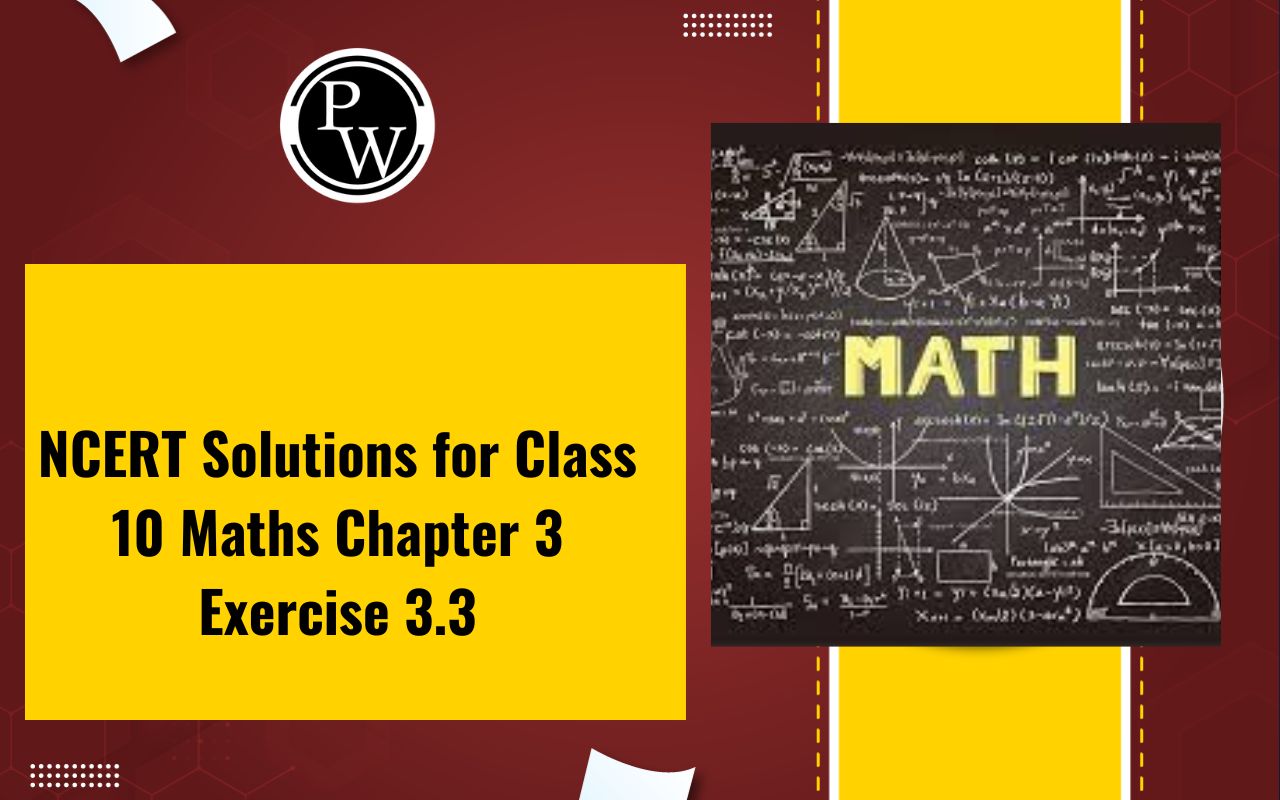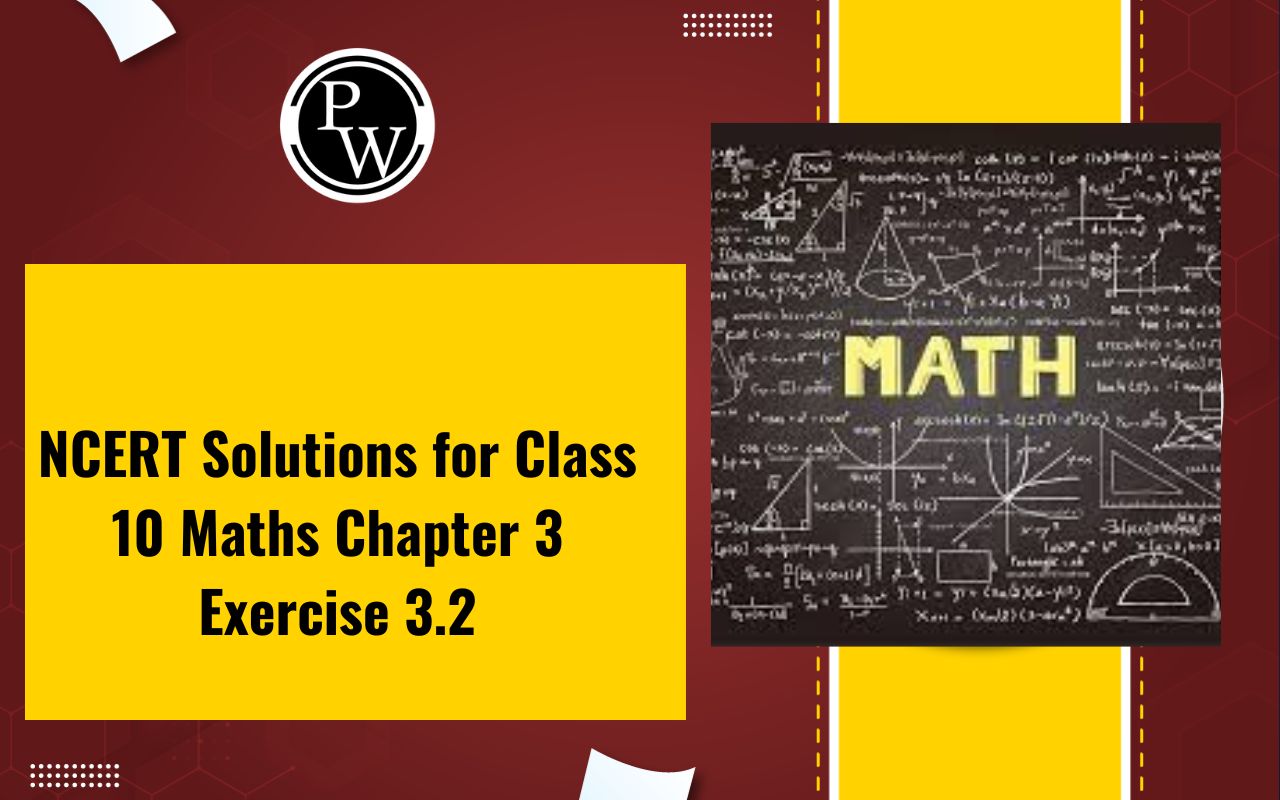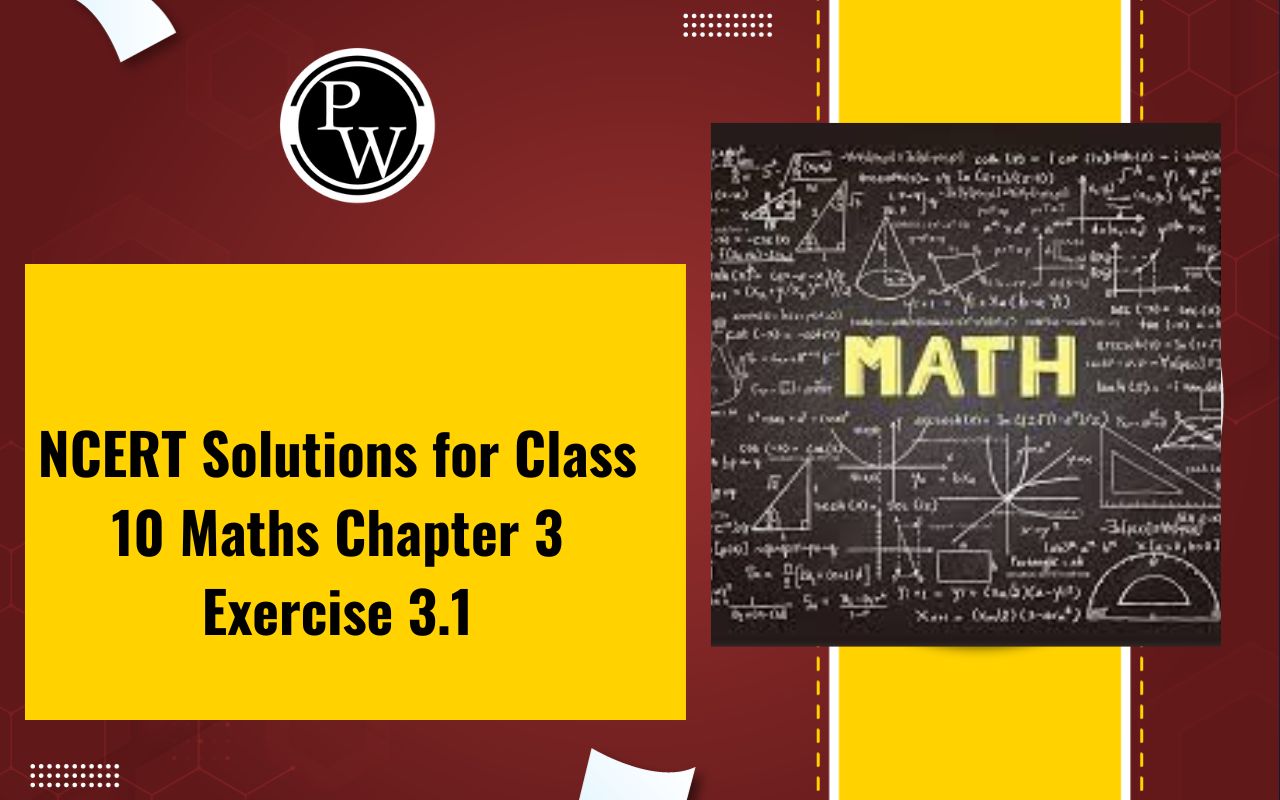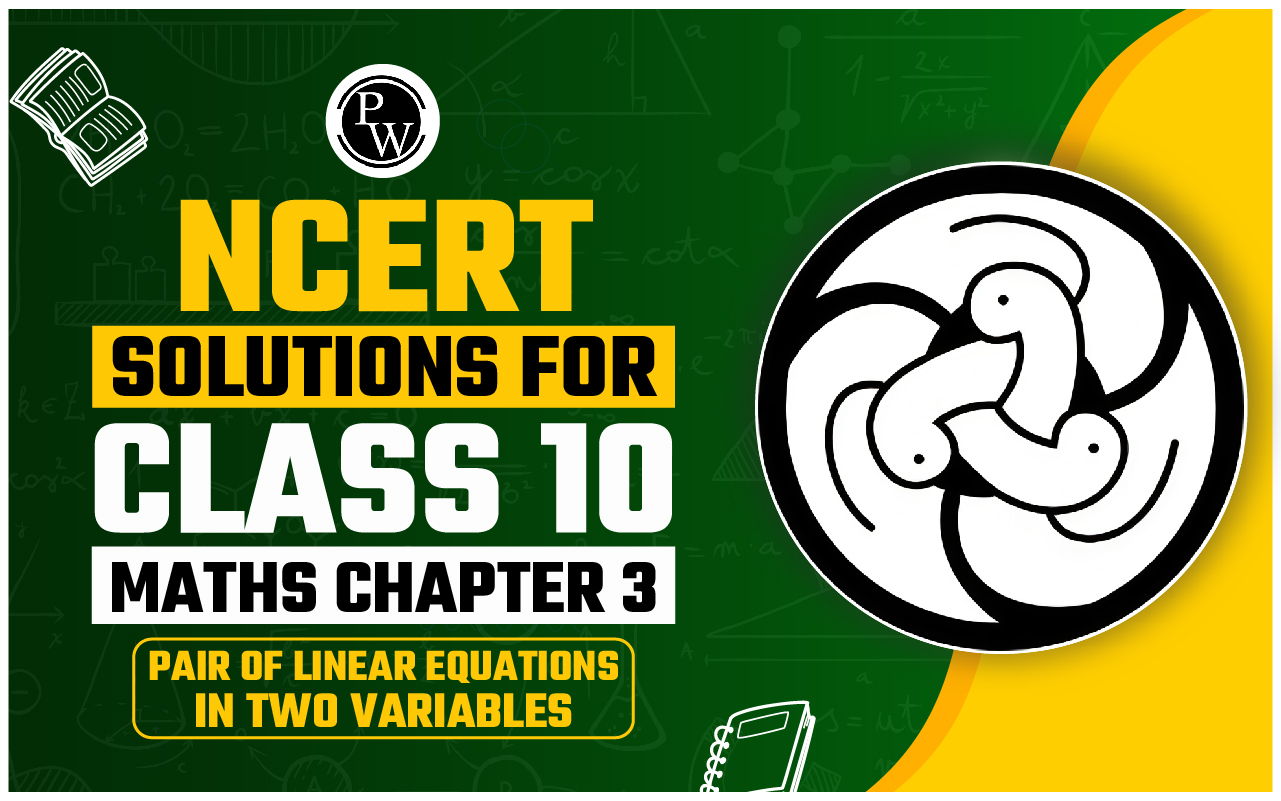
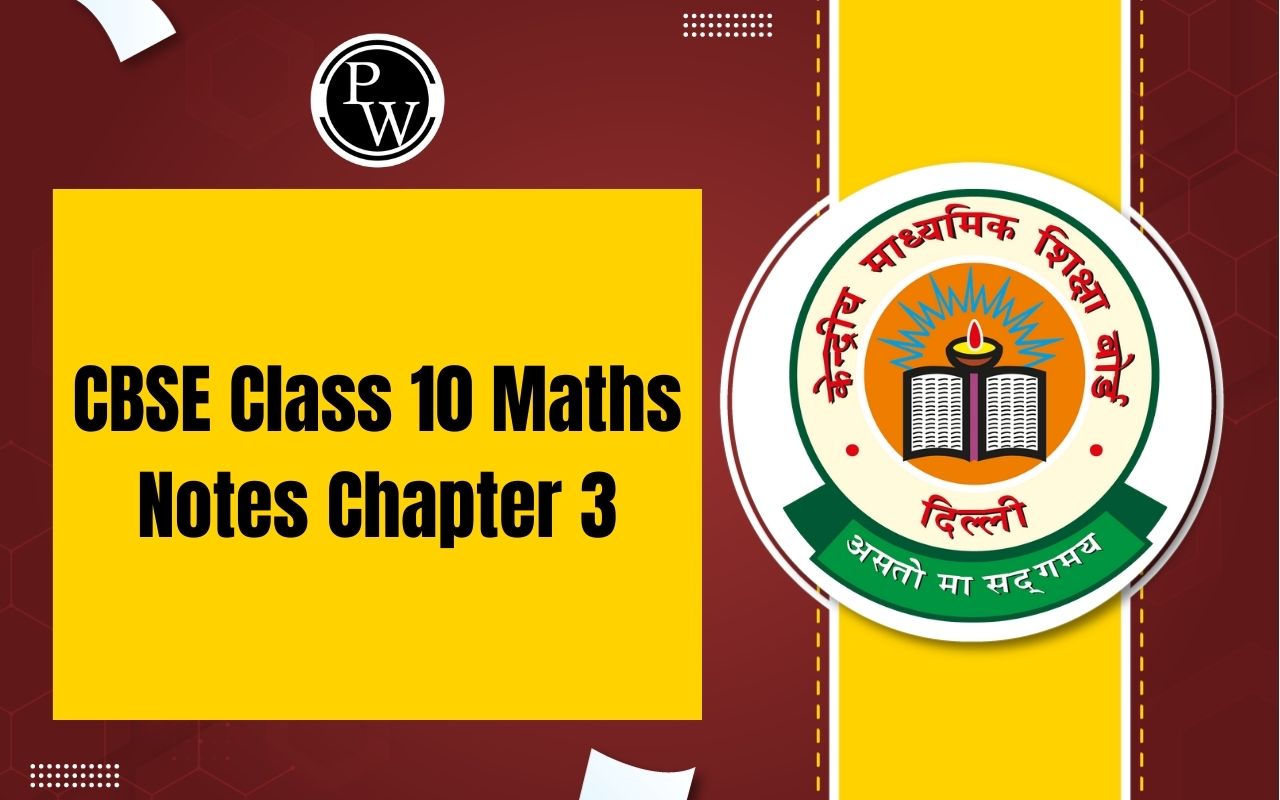
CBSE Class 10 Maths Notes Chapter 3: In CBSE Class 10 Maths, Chapter 3 talks about Pair of Linear Equations In Two Variables. This chapter helps us solve two equations that involve two different things, like x and y.
We learn different ways to solve these equations, like drawing graphs, substituting numbers, and using elimination. It is important because we use this knowledge in many real-life situations, such as figuring out costs and profits, or solving problems about age, time, and distance. By understanding this chapter, we get better at solving problems and thinking logically.CBSE Class 10 Syllabus 2024-25
CBSE Class 10 Maths Notes Chapter 3 Pair of Linear Equations In Two Variables PDF
Students can get free CBSE Solutions (NCERT) and other study materials from the website. To help you review the entire syllabus and get better grades in your exams, you can download the Class 10 Maths NCERT Solutions.CBSE Class 10 Maths Notes Chapter 3 PDF
CBSE Class 10 Maths Notes Chapter 3 Pair of Linear Equations In Two Variables
Equation
An equation is a statement that says two mathematical expressions with one or more variables are equal.Linear Equation
Equations where the powers of all involved variables are one are termed linear equations. The degree of a linear equation is always one.General Form of a Linear Equation in Two Variables
The standard form of a linear equation in two variables is ax + by + c = 0, where both a and b cannot be zero at the same time.Representing Linear Equations for a Word Problem
Solution of a Linear Equation in 2 Variables
In a linear equation in two variables, the solution is a pair of values (x, y) that satisfy the equation, making both sides equal. For example, in 2x + y = 4, (0, 4) is a solution since it fulfills the equation. Linear equations in two variables possess infinitely many solutions.Geometrical Representation of a Linear Equation
Geometrically, a linear equation in two variables can be represented as a straight line. For example, consider the equation 2x – y + 1 = 0, which can be rewritten as y = 2x + 1. Let's plot the graph for this equation.Step 1: Substitute x = 0 to find y. This gives us y = 1, so the coordinate (0, 1) is one point on the line.
Step 2: Substitute x = -1/2 or 0.5 to find y = 0. This gives us the coordinate (-0.5, 0).
By finding more points in a similar manner, we can plot the graph by connecting the points (0, 1) and (-0.5, 0) with a straight line, as shown below.
Plotting a Straight Line
The graph of a linear equation in two variables is a straight line. We plot the straight line as follows: Any additional points plotted in this manner will lie on the same line.
For example, in the above section, we have plotted the graph for y = 2x + 1, which shows a straight line passing through the points (0, 1) and (-0.5, 0).
Any additional points plotted in this manner will lie on the same line.
For example, in the above section, we have plotted the graph for y = 2x + 1, which shows a straight line passing through the points (0, 1) and (-0.5, 0).
General Form of a Pair of Linear Equations in 2 Variables
A pair of linear equations in two variables can be represented as follows:Nature of 2 Straight Lines in a Plane
For a pair of straight lines on a plane, there are three possibilities. i) They intersect at exactly one point


Representing Pair of LE in 2 Variables Graphically
Graphically, a pair of linear equations in two variables can be represented by a pair of straight lines.Graphical Method of Finding Solution of a Pair of Linear Equations
The Graphical Method of finding the solution to a pair of linear equations is as follows:- Plot both the equations (two straight lines)
- Find the point of intersection of the lines.
Comparing the Ratios of Coefficients of a Linear Equation
Example: On comparing the ratio, (a1/a2) , (b1/b2) , (c1/c2) find out whether 2x – 3y = 8 and 4x – 6y = 9 are consistent, or inconsistent.
Solution: As per the given pair of linear equations, 2x – 3y = 8 and 4x – 6y = 9, we have;
a1 = 2, b1 = -3, c1 = -8 a2 = 4, b2 = -6, c2 = -9 (a1/a2) = 2/4 = 1/2 (b1/b2) = -3/-6 = 1/2 (c1/c2) = -8/-9 = 8/9 Since , (a1/a2) = (b1/b2) ≠ (c1/c2) So, the given linear equations are parallel to each other and have no possible solution. Hence, the given pair of linear equations is inconsistent.Algebraic Solution
Finding Solutions for Consistent Pairs of Linear Equations
The solution of a pair of linear equations is of the form (x,y), which satisfies both equations simultaneously. Solution for a consistent pair of linear equations can be found using i) Elimination method ii) Substitution Method iii) Cross-multiplication method iv) Graphical methodSubstitution Method of Finding Solution of a Pair of Linear Equations
Substitution method: y – 2 x = 1 x + 2y = 12 (i) express one variable in terms of the other using one of the equations. In this case, y = 2 x + 1. (ii) substitute for this variable (y) in the second equation to get a linear equation in one variable, x. x + 2 × (2 x + 1) = 12 ⇒ 5 x + 2 = 12 (iii) Solve the linear equation in one variable to find the value of that variable. 5 x + 2 = 12 ⇒ x = 2 (iv) Substitute this value in one of the equations to get the value of the other variable. y = 2 × 2 + 1 ⇒y = 5 So, (2,5) is the required solution of the pair of linear equations y – 2 x = 1 and x + 2y = 12.Elimination Method of Finding Solution of a Pair of Linear Equations
Elimination method Consider x + 2y = 8 and 2 x – 3y = 2Step 1: Make the coefficients of any variable the same by multiplying the equations with constants. Multiplying the first equation by 2, we get,
2 x + 4y = 16Step 2: Add or subtract the equations to eliminate one variable, giving a single variable equation.
Subtract the second equation from the previous equation 2x + 4y = 16 2x – 3y = 2 – + – ———————– 0(x) + 7y =14Step 3: Solve for one variable and substitute this in any equation to get the other variable.
y = 2, x = 8 – 2 y ⇒ x = 8 – 4 ⇒ x = 4 (4, 2) is the solution.Cross-Multiplication Method of Finding Solution of a Pair of Linear Equations
For the pair of linear equations a 1 x + b 1 y + c 1 =0 a 2 x + b 2 y + c 2 =0, x and y can be calculated as x = (b 1 c 2 −b 2 c 1 )/(a 1 b 2 −a 2 b 1 ) y = (c 1 a 2 −c 2 a 1 )/(a 1 b 2 −a 2 b 1 )Equations Reducible to a Pair of Linear Equations in 2 Variables
In this section, we learn about equations that are not linear but can be reduced to a pair of linear equations using the substitution method. Let's understand this with an example: 2/x + 3/y = 4 5/x − 4/y = 9 We can make the substitution: 1/x = u and 1/y = v The pair of equations reduces to: 2u + 3v = 4 …..(i) 5u − 4v = 9 ….(ii) From the first equation, we isolate the value of u: u = (4 - 3v)/2 Now, substitute the value of u in equation (ii): 5[(4 - 3v)/2] − 4v = 9 Solving for v, we get: v = 2/23 Now, substitute the value of v in u = (4 - 3v)/2, to get the value of u: u = 43/23 Since u = 1/x or x = 1/u = 23/43 and v = 1/y or y = 1/v, so y = 23/2. Hence, the solutions are x = 23/43 and y = 23/2.Benefits of CBSE Class 10 Maths Notes Chapter 3 Pair of Linear Equations In Two Variables
- Conceptual Understanding: The notes provide a clear and concise explanation of the concepts related to pair of linear equations in two variables, enhancing students' understanding of the topic.
- Simplified Learning: Complex topics are broken down into simpler explanations, making it easier for students to comprehend and retain the information.
- Effective Study Aid: The notes serve as an effective study aid for exam preparation, summarizing important concepts and formulas in one place for quick revision.
- Improved Recall: By presenting key points and formulas in a structured manner, the notes help improve students' recall of important information during exams.
- Efficient Preparation: Students can efficiently prepare for exams by using the notes to review important concepts, solve practice problems, and reinforce their understanding of the topic.
CBSE Class 10 Maths Notes Chapter 3 FAQs
What is a linear equation?
What is the solution of a linear equation in two variables?
How is a linear equation in two variables represented geometrically?
Can non-linear equations be reduced to a pair of linear equations?
What is the substitution method for solving a system of linear equations?




